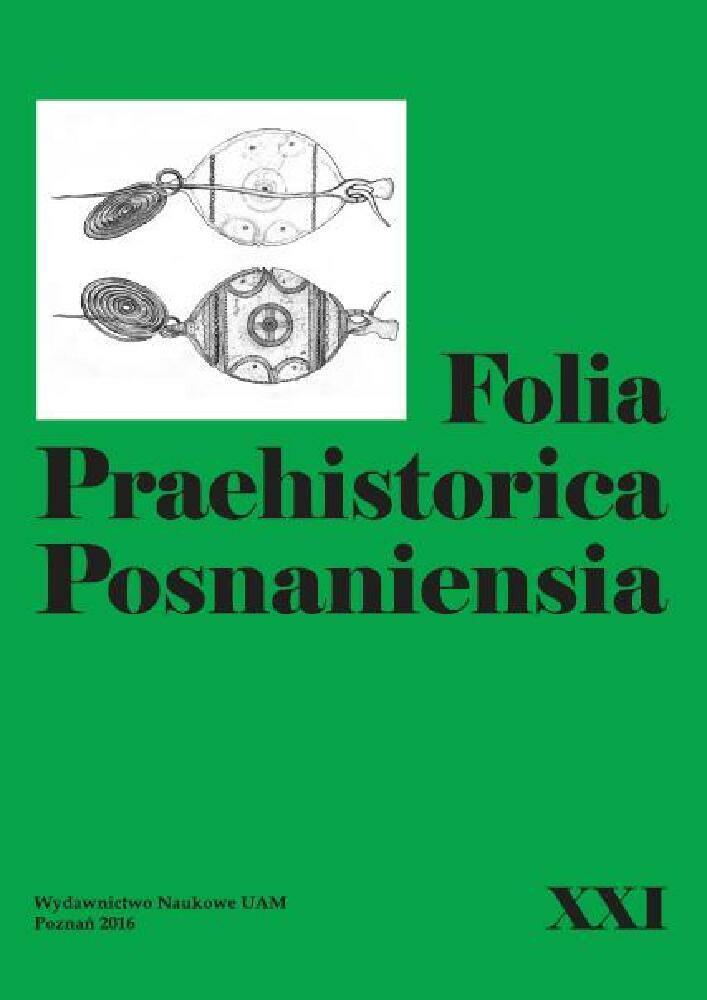Abstract
The paper’s main aim is to outline the problem of polarisation of contemporary discussion concerning the concept of origins of warfare. Basically, two leading trends can be distinguished: the first one accentuates the biological basis of human violence and places its origins deep into our evolutionary past. The second one recognises conflict as a relatively late and typically cultural phenomenon in human prehistory, which cannot be interpreted in terms of natural selection and evolution. The existence of a sharp ideological border between ‘hawks’ and ‘doves’ enables a comparison of both perspectives and facilitates the analysis of internal dynamics of their development.
References
Alexander R. 1979 Darwinism and human affairs. London: Pitman.
Arkush E., Allen M.W. (red.) 2006 The archaeology of warfare: Prehistories or raid and conquest. Florida: Florida University Press.
Buliński T., Kairski M. 2006 Sny, Trofea, Geny i Zmarli. „Wojna” w społecznościach przedpaństwowych na przykładzie Amazonii – przegląd koncepcji antropologicznych. Poznań: Wydawnictwo Naukowe UAM.
Chagnon N. 2013 Noble Savages. My life among two dangerous tribes – the Yanomamö and the anthropologists (s. 214–378). New York: Simon & Schuster.
Cosmides L. 1985 Deduction or Darwinian Algorithms? An explanation of the “elusive" content effect on the Wason selection task. Doctoral dissertation, http://www.cep.ucsb.edu/publist.htm.
Dart R. 1953 The Predatory Transition from Ape to Man. International Anthropological and Linguistic Review, 1, s. 201–217.
Dawson D. 1996 The Origins of War: Biological and Anthropological Theories. History and Theory, 35 (1, Feb.), s. 1–28.
Dawson D. 1999 Theory and Group Selection: The Question of Warfare, History and Theory, 38(4), Theme Issue 38: The Return of Science: Evolutionary Ideas and History (Dec., 1999), s. 79–100.
Durkheim E. 2016 Zasady metody socjologicznej. Warszawa: Wydawnictwo PWN.
Ferguson R.B. 1990 The Blood of Leviathan. Western contact and warfare in Amazonia, http://www.ncas.rutgers.edu/sites/fasn/files/Blood_of_the_Leviathan.pdf
Ferguson R.B. 2001 Materialist, cultural and biological theories on why Yanomami make war, https://www.ncas.rutgers.edu/sites/fasn/files/Materialist%20Cultural%20Biological.pdf
Ferguson R.B. 2006 Archaeology, Cultural Anthropology and the Origins and Intensifications of War. W: E. Arkush, M.W. Allen (red.), The archaeology of warfare: Prehistories of raid and conquest (s. 469–523). Florida: Florida University Press.
Ferguson R.B. 2008 Ten Points on War, http://www.ncas.rutgers.edu/sites/fasn/files/Ten%20Points%20on%20War%20(2008).pdf
Ferguson R.B. 2013 The Prehistory of War and Peace in Europe and the Near East, http://www.ncas.rutgers.edu/sites/fasn/files/The%20Prehistory%20of%20War%20and%20Peace%20in%20Europe%20and%20the%20Near%20East%20(2013)_0.pdf
Freud S. 1997 Totem i tabu: kilka zgodności w życiu psychicznym dzikich i neurotyków. Warszawa: Wydawnictwo KR.
Fry D (red.). 2013 War, Peace and Human Nature. The Convergence of Evolutionary and Cultural Views. Oxford: Oxford University Press.
Gat A. 2006 War in Human Civilisation. Oxford: University Press.
Guilaine J., Zammit J. 2005 Origins of War. Violence in Prehistory. Ames, Iowa: Blackwell Publishing.
Haas J. 1998 Warfare and the evolution of culture. Santa Fe: Santa Fe Institute.
Harris M. 1979 Cultural Materialism. The Struggle for a Science of Culture. New York: Random House.
Harris M. 2006 Yanomamo i przyczyny wojen w społeczeństwach kopieniaczych oraz zbieracko-łowieckich. W: T. Buliński, M. Kairski (red.), Sny, Trofea, Geny i Zmarli. „Wojna” w społecznościach przedpaństwowych na przykładzie Amazonii – przegląd koncepcji antropologicznych (87–108). Poznań: Wydawnictwo Naukowe UAM.
Hobbes T. 2005 Lewiatan, czyli Materia, forma i władza państwa świeckiego i kościelnego. Warszawa: Państwowe Wydawnictwo Naukowe.
Keeley L.H. 1996 War Before Civilisation. New York, Oxford: Oxford University Press.
LeBlanc S.A., Register K.E. 2003 Constant Battles: The Myth of Peaceful, Noble Savage. New York: St. Martin’s Press.
Malinowski B. 1940 An Anthropological Analysis of War. American Journal of Sociology, 46, s. 521–550.
Mead M. 1940 Warfare is Only an Invention – Not a Biological Necessity, http://users.metu.edu.tr/utuba/Mead.pdf
Otterbein K. 2004 How War Began (s. 3–38). Texas: A&M University Press.
Pinker S. 2011 The Better Angels of Our Nature: Why Violence has Declined. London: Penguin Books.
Przybyła M. 2014 Teoria ewolucji w archeologicznych badaniach nad dawnymi społeczeństwami (Prace Archeologiczne 67). Kraków. Instytut Archeologii UJ.
Rousseau J.J. 1966 Umowa Społeczna. Warszawa: Wydawnictwo PWN.
Spencer H. 1851 Social Statics, http://oll.libertyfund.org/people/165.
Sussman R., Marshack J. 2010 Are Humans Inherently Killers? A Critique by Robert Sussman and Joshua Marshack Followed by a Response by Richard Wrangham. Global Nonkilling Working Papers, http://nonkilling.org/pdf/wp1.pdf.
Thorpe I.J.N. 2005 The ancient origins of warfare and violence. W: M.P. Pearson, I.J.N Thorpe (red.), Warfare, violence and slavery in prehistory: proceedings of a Prehistoric Society conference at Sheffield University (BAR International Series, 1374, s. 1–18). Oxford: Archaeopress.
Tooby J., Cosmides L. 1988 The Evolution of War and its Cognitive Foundations. Institute for Evolutionary Studies Technical Report 88-1.
Turney-High H. 1949 Primitive War. Its Practice and Concepts (s. 21–137). Columbia: University of South Caroline Press.
Vencl S. 1984 War and Warfare in Archaeology. Journal of Anthropological Archaeology, 3, s. 116–132.
Wilson E.O. 1978 On Human Nature, Cambride MA: Harvard University Press.
Wrangham R., Peterson D. 1999 Demoniczne Samce. Małpy człekokształtne i źródła ludzkiej przemocy (s. 7–311). Warszawa: Państwowy Instytut Wydawniczy.
Wrangham R. 2010 Chimpanzee Violence is a Serious Topic: A response to Sussman and Marshack’s critique of Demonic Males: Apes and the Origins of Human Violence, Global Nonkilling
Working Papers, http://nonkilling.org/pdf/wp1.pdf.
Wright Q. 1942 A Study of War (s. 85–88). Chicago: University of Chicago Press.
